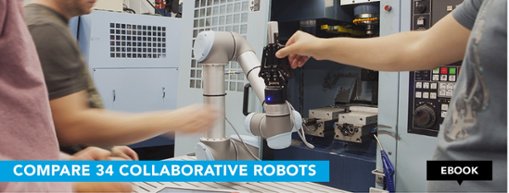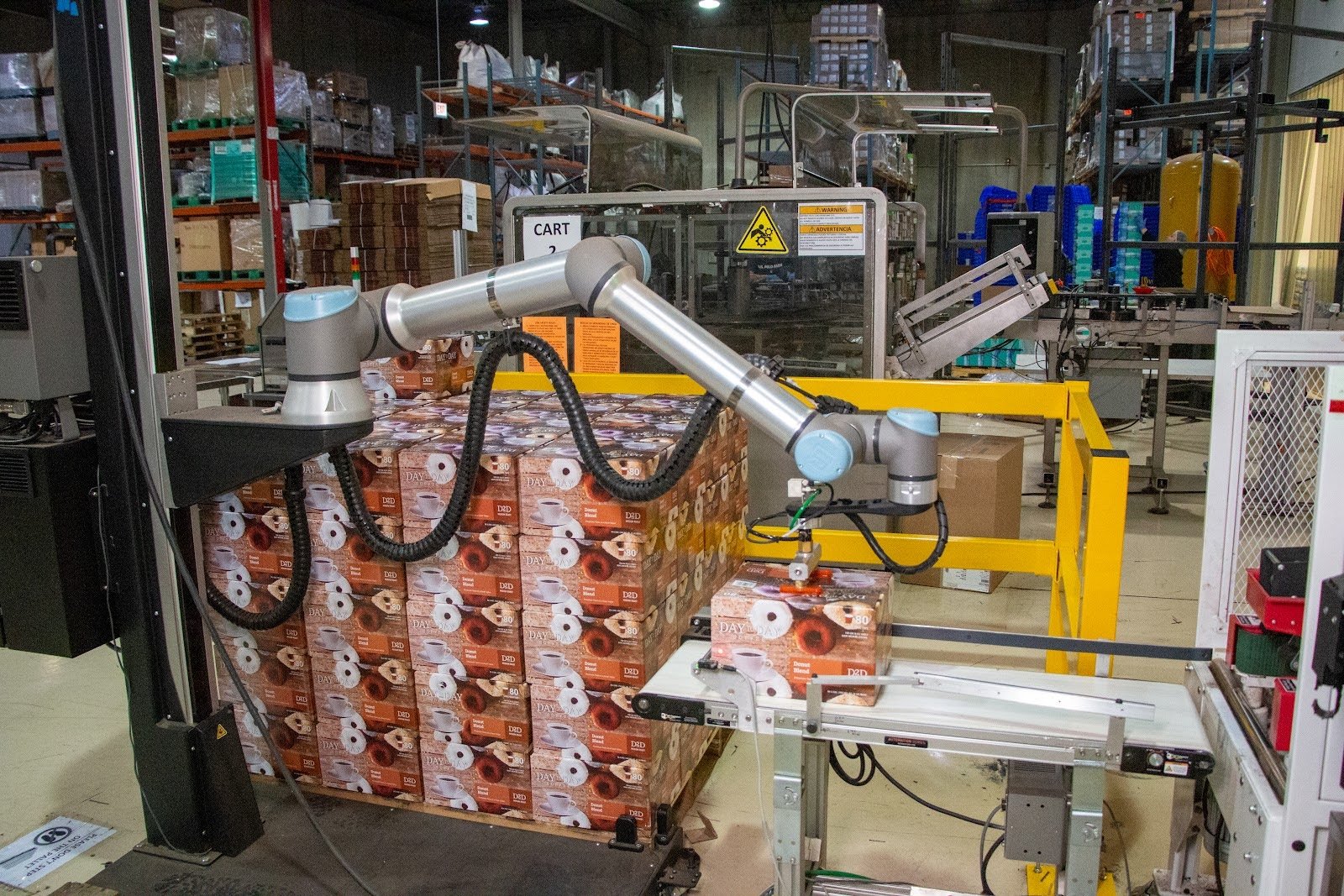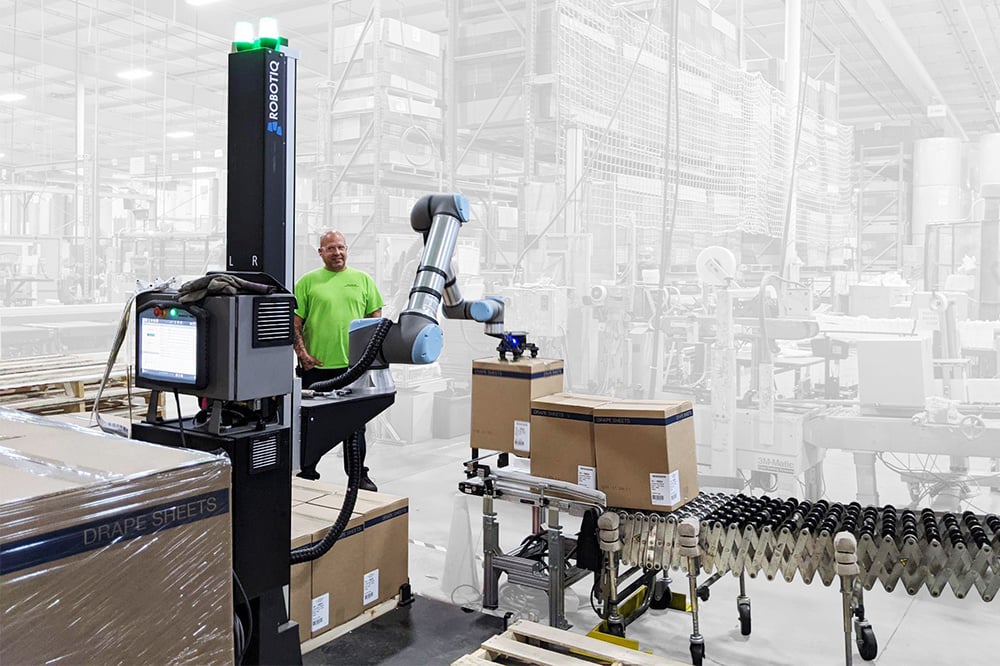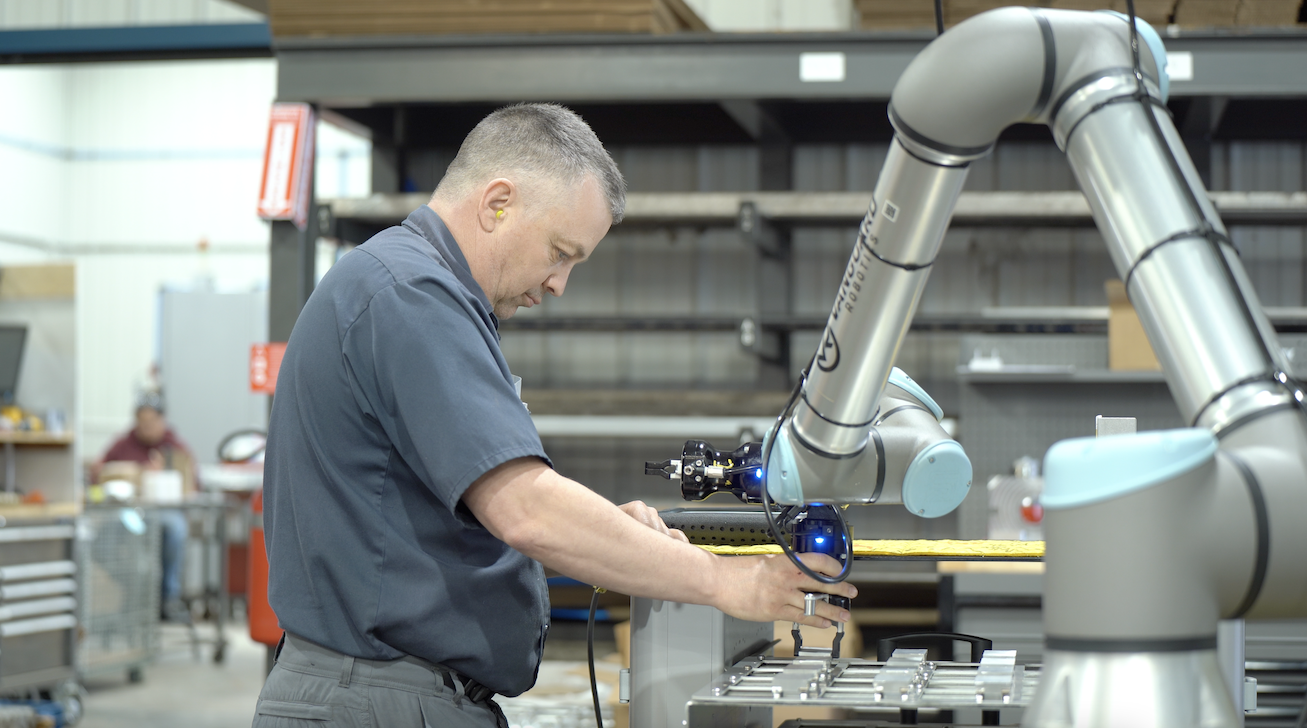Top 6 Robotic Applications in Food Manufacturing

Posted on Aug 08, 2017 in Manufacturing
5 min read time
Robot butchers, cake decorator and pizza-baking manipulators. Here are our six favorite robot applications which are changing the food industry.
Robotic food manufacturing is a rising trend in the food industry. The value of the global food automation industry is expected to rise to $2.5 billion by 2022.
In this article, we introduce six robotic applications in food processing. As we discussed in our previous article on the food industry, food manufacturing can be separated into two stages: primary food processing and secondary food processing.
Top 3 Robotic Applications in Primary Food Processing
Primary processing involves handling raw food products, which are cleaned, sorted, chopped, packaged, etc. Some foods, like raw vegetables, will only undergo primary processing before they are packaged for the consumer. Other foods will undergo secondary processing before packaging.
Up until quite recently, robotic processing at this stage has been limited or non-existent. Raw foods are variable in size, weight and shape. This makes it difficult for robots to handle them. However, recent developments in sensing and soft gripping has made it possible for robots to handle many raw foods.
1. Robotic Butchery
Butchery is a very difficult task to automate. Every animal carcass is different. A skilled butcher will adapt each cut to the shape and position of bones and meat. Some butchery tasks are simpler to automate than others. For example, high-volume chicken leg deboning is an established part of the meat processing industry.
Beef butchery has traditionally been very difficult to automate. Recently, beef manufacturer JBS has started looking for ways to introduce robots into their factories. Parts of the process are very dangerous for human workers. Rib cutting, for example, involves operating a high-speed circular saw for several hours. JBS has managed to automate this action using robot manipulators and various vision sensors. The application has improved safety and product consistency.
2. Fruit and Vegetable Pick and Place
Fruits and vegetables are challenging to handle with a robot due to their variable sizes and shapes. They also require delicate handling to avoid damage. For these reasons they have traditionally been handled by human workers. However, recent developments in gripping technologies look to change all that.
Soft Robotics Inc has introduced a flexible gripper which can handle very delicate foods, even individual lettuce leaves!
Another example is Lacquey's gripper, which uses paddles to lift soft fruits and vegetables.
3. Robotic Cutting and Slicing
Some cutting and slicing tasks are easy to automate. For example, even kitchen food processors can slice vegetables into uniform shapes. Robots are not needed for this type of simple automation.
For more advanced cutting and slicing, however, the food industry has relied on human workers but robotics is starting to make its way into the industry. Fish cutting, for example, involves detecting and removing defects from the fish as well as cutting fillets to uniform shapes and sizes.
Top 3 Robotic Applications in Secondary Food Processing
Secondary processing involves handling products which have already undergone primary processing. Robots have been used for several applications for a long time, particularly pick and place. However, recent developments have opened the door to even more advanced applications.
1. Product Pick and Place
You may be familiar with the high speed delta robots which are used to move food products around a production line. If not, here is a video:
This is an example of secondary processing pick and place. It is distinct from the vegetable pick and place mentioned above because the products are more uniform in shape and size. Uniform foods are much easier to handle robotically, so this application has been available in the food industry for many years.
2. Cake Decorating
One impressive application is robotic cake decoration. This involves using a robotic arm much like a 3D printer to pipe icing onto a cake. The Deco-Bot from Unifiller can pipe hand-drawn decorations onto cakes on a moving conveyor.
3. Pizza Making
Artisan food producers sometimes worry that adding robots their process will make their products less "hand-made." However, Silicon Valley pizza producer Zume is showing how robots can be produced to look like they have the human touch. Their pizzeria uses two robots: a delta robot to spread the tomato sauce and a ABB manipulator to tend the pre-baking ovens. While their system is far from fully automated, their goal is to make the pizza delivery industry a labor-free business.
Finally… Washing Up!
Contaminated food causes 48 million people in the USA to become sick annually. Robotic food processing has the potential to reduce this, by removing human workers from parts of the process, but this is only possible if the robots themselves do not cause contamination.
One of the more challenging issues for food automation is the fact that every piece of machinery must be thoroughly cleaned to avoid contamination. Robot manufacturers have been working to make their robot casings smoother, with better ingress ratings and no loose wires. This allows them to be thoroughly washed down at the end of each cycle.
In this system from JMP Automation, the two robots wash down the workcell with high powered water, and even wash down each other:
What are your favorite applications in robotic food manufacturing? Tell us in the comments below or join the discussion on LinkedIn, Twitter, Facebook or the DoF professional robotics community.






Leave a comment